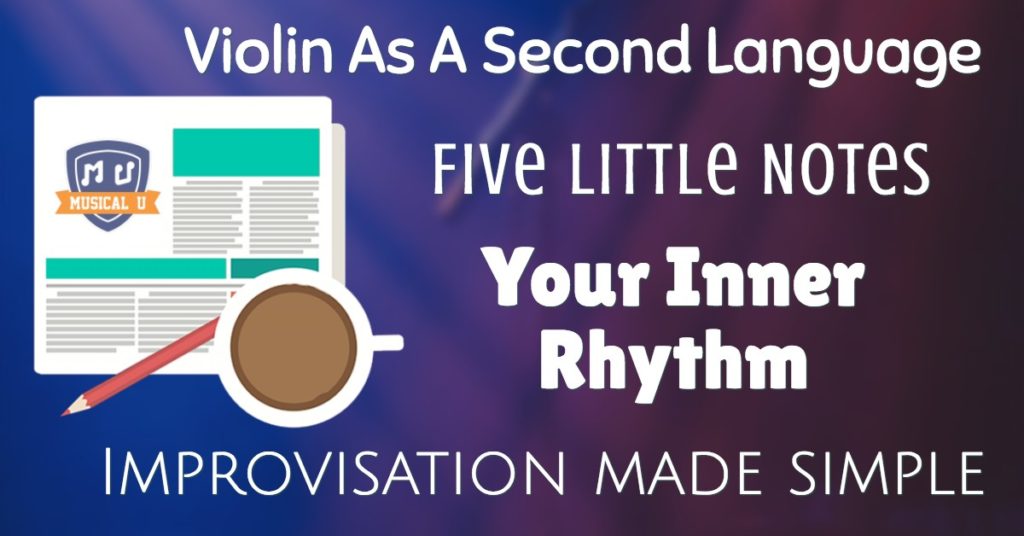Revisiting things you’ve already learned during your music journey and going back to basics not only provides you with a nice dose with nostalgia – it also helps you sharpen skills that have dulled over time.
This can mean revisiting an instrument you used to play (and learning some new lessons along the way!), sharpening your rhythm skills, discovering the hidden uses of a simple, oft-forgotten scale, or going back to the basics of improvisation…
…or all four!
Violin As A Second Language
Marisa hadn’t picked up her high school instrument, the violin, in over 20 years when she was asked to play second violin in a rock symphony orchestra. She was an opera singer who was confident that her musical skills and violin experience combined would carry her through the challenge.
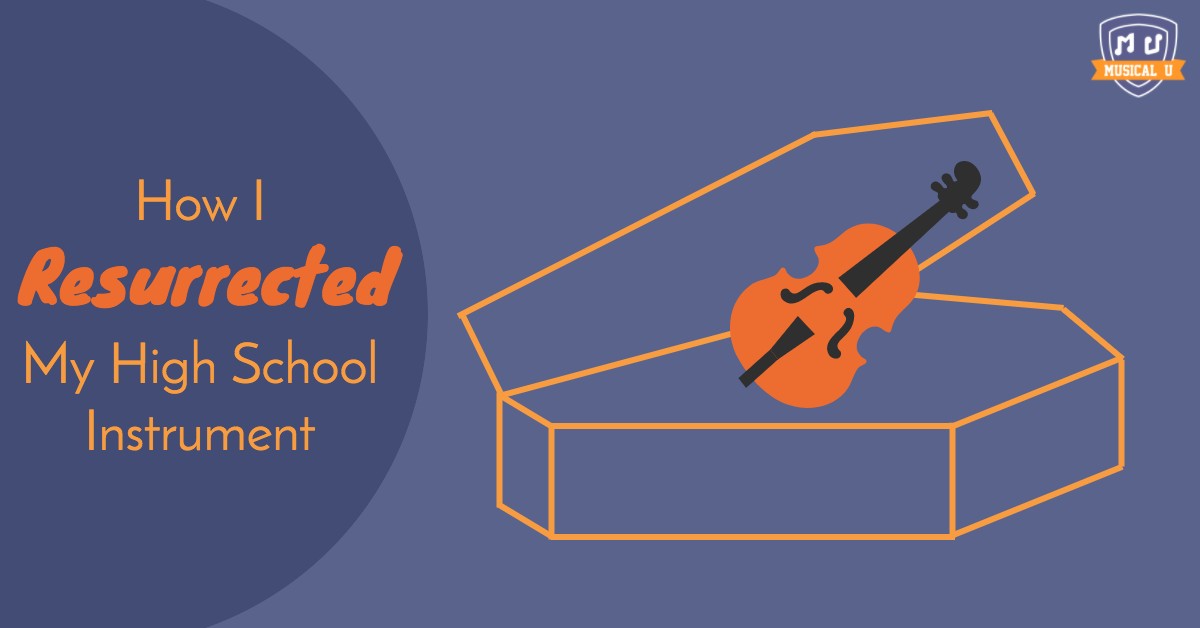 Until she actually picked up the violin again. Navigating difficult key signatures, complicated rhythms, rusty muscle memory, and a lack of instrument care know-how, Marisa learned that returning to an instrument you once played isn’t always like riding a bike – you cannot necessarily just pick up where you left off.
Until she actually picked up the violin again. Navigating difficult key signatures, complicated rhythms, rusty muscle memory, and a lack of instrument care know-how, Marisa learned that returning to an instrument you once played isn’t always like riding a bike – you cannot necessarily just pick up where you left off.
Thankfully, Marisa had a massive advantage – she had transferrable musical skills in her corner from her years as an opera singer. Learn how she put these to good use and picked up some new tricks on violin in How I Resurrected My High School Instrument!
As a violinist, Marisa had to adapt to key signatures that were transposed to make it easier for the singers to perform. But, as a singer, key signatures weren’t something that she had to regularly be concerned with! If you’re a vocalist trying to learn an instrument, Mella Music has you covered with their guide to key signatures.
Having good practice habits greatly benefited Marisa as she sought to relearn her instrument and the complex parts in a short period of time. What are some habits that can destroy a good practice session? Eddy from The Practice Journal writes about what not to do during music practice.
Marisa was very cognizant of how she needed to prepare for a vocal performance, but was not nearly as sure about the stresses that playing violin would have on her body. Music can take a toll on many parts of the body, and it is very important to take proper care of joints and other aches that can arise as you start playing more. Music Consultant gives some great tips for avoiding muscle fatigue, pain, and injury.
Five Little Notes
Whether you’re new to improvisation or a seasoned pro, the creative well can run dry sometimes.
Enter the pentascale – a scale consisting of the first five notes of a regular major scale. This is the perfect scale to riff off – those new to improvisation will be delighted with how easy it is to play (and play around with), while experienced musicians will find that the five-note constraint actually inspires creativity, rather than stifling it.
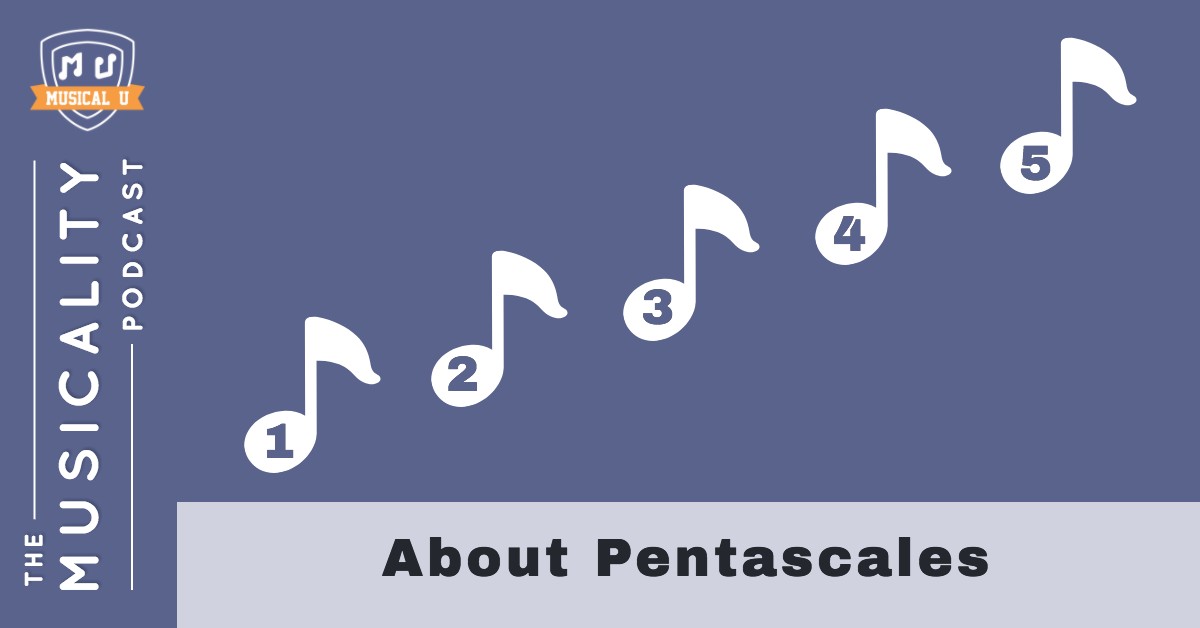 In our podcast episode About Pentascales, we discuss the unique relationship of pentascales to chords, the difference between pentascales and pentatonic scales, the simple trick for playing this scale on the piano, and how this underestimated scale can get you thinking about musical dimensions other than just pitch.
In our podcast episode About Pentascales, we discuss the unique relationship of pentascales to chords, the difference between pentascales and pentatonic scales, the simple trick for playing this scale on the piano, and how this underestimated scale can get you thinking about musical dimensions other than just pitch.
Pentascales are great for piano students! One of the reasons that this type of scale is so popular with pianists is that they are able to play with all five of their fingers without having to change position. Music Motivation explains how to get moving with pentascales.
Once you get started with pentascales, move around the keyboard until you can play them in all 12 keys! Galaxy Music Notes has a handy resource to help you move throughout the key signatures!
After those exercises, you are ready to see how pentascales can be either major or minor. Changing just one note will dramatically alter the way that this scale sounds. For a full tutorial, check out this video lesson from the Hoffman Academy.
Remembering Your Rhythm
This month, our resident pros tackled the topic of rhythm from the perspective of ear training and musicality. The question they set out to answer is, “How do you develop your inner sense of rhythm and apply it to your instrument?”
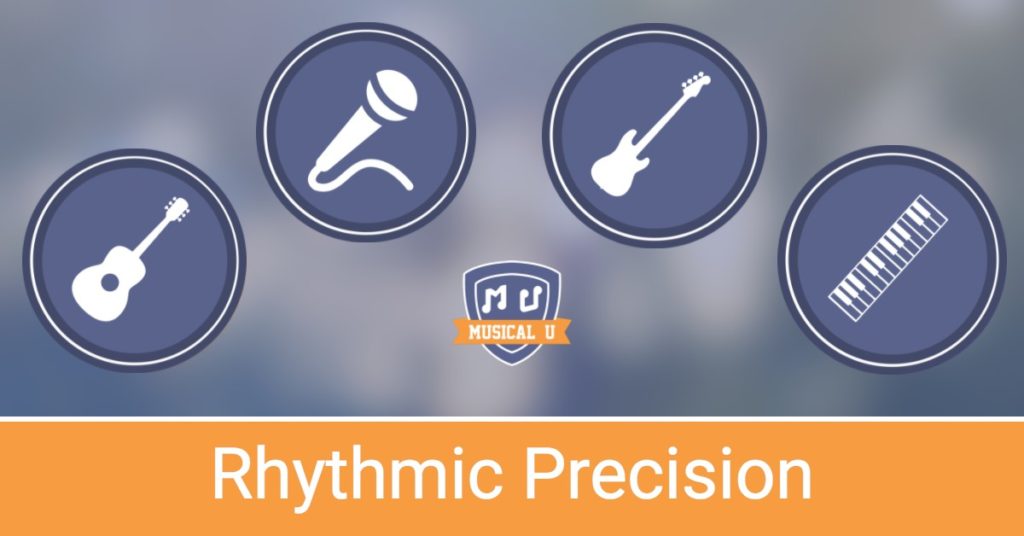 Needless to say, they rose to the challenge beautifully.
Needless to say, they rose to the challenge beautifully.
Bass master Steve Lawson shares the secret of rhythmic precision and shows you how to train your “inner metronome”. A great framework for playing elaborate rhythms is given by guitar pro Dylan Welsh. Meanwhile, piano pro Sara Campbell addresses specific rhythmic problems that plague pianists, and offers tips and exercises to help you conquer them.
Head over to Rhythmic Precision: Resource Pack Preview to learn more about what the pros have in store for you for the month of October!
Developing a keen sense of rhythm is a very important part of becoming a proficient musician. And, like ear training, it can be accomplished by allocating a small portion of your practice time to developing your rhythmic ear. Simon from Classical Guitar Corner has a 15 minute lesson to get you started.
The Musical U Resident Pros took us through some fascinating tutorials on developing rhythm. Rhythm is often confused with the beat of a song, which is a different aspect of the music. Kim Foster from Precision Musician talks about how understanding the differences will improve your ability to perform in an ensemble.
Ready to get started with your own rhythmic mastery? Here are 10 tips for more effective rhythm practice from Rick at Ninebuzz!
Improvisation Made Simple
On this week’s interview podcast episode, we place the spotlight on our piano pro Sara Campbell, letting her take you back to the basics of improvisation.
At first, improvisation was a topic Sara herself approached with caution in her own teaching. However, wanting to give her students a piano experience beyond just learning and memorizing songs, she found resources that helped her teach improvising in an intuitive, straightforward way.
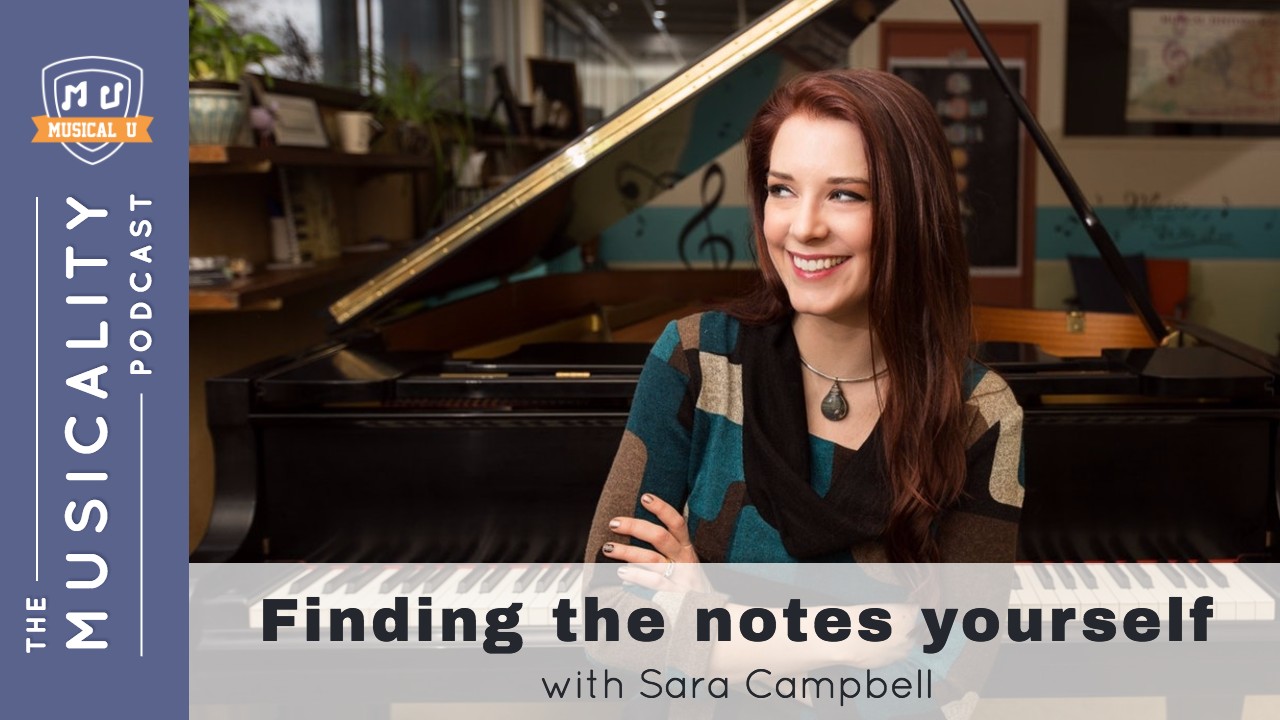 Whether you’re a devoted piano player or are just starting to plunk out notes on your keyboard, you’ll want to tune into Finding the Notes Yourself, with Sara Campbell to learn how to develop musicality and begin improvising, and what helped make things click for her as a piano player.
Whether you’re a devoted piano player or are just starting to plunk out notes on your keyboard, you’ll want to tune into Finding the Notes Yourself, with Sara Campbell to learn how to develop musicality and begin improvising, and what helped make things click for her as a piano player.
Sara talked about her early experiences playing the piano and how much she was encouraged to experiment in her playing. This is such a great exercise to really push the boundaries of your musicality and learn without consequence! For some fun exercises for younger students, Susan Paradis has compiled a wonderful list of free resources.
While in college, Sara was first exposed to lead sheets. This was a pivotal moment in her musical learning and forced her to move past her boundaries into areas that weren’t as comfortable. Teach Piano Today provides you with 18 fun pieces to get started!
In her workshops, Sara mentioned that they would bring in professionals and show the students that even seasoned musicians make mistakes, especially when improvising or jamming. This helps to overcome the fear that so many of us have when trying to perform in this type of setting. To give you some ideas of how to calm those nerves, Skoove has six foolproof tips to make you more comfortable playing in front of others.
Building Blocks
A solid inner sense of rhythm, the ability to master a second instrument, a simple-yet-versatile five note scale, and a good foundation for improvisation are four tools that will take you far in your music journey.
The best part? You can learn them all yourself, with a little help from the almighty music teacher named Ear Training! Sharp aural skills will help you reach your musical goals, whatever they are.

